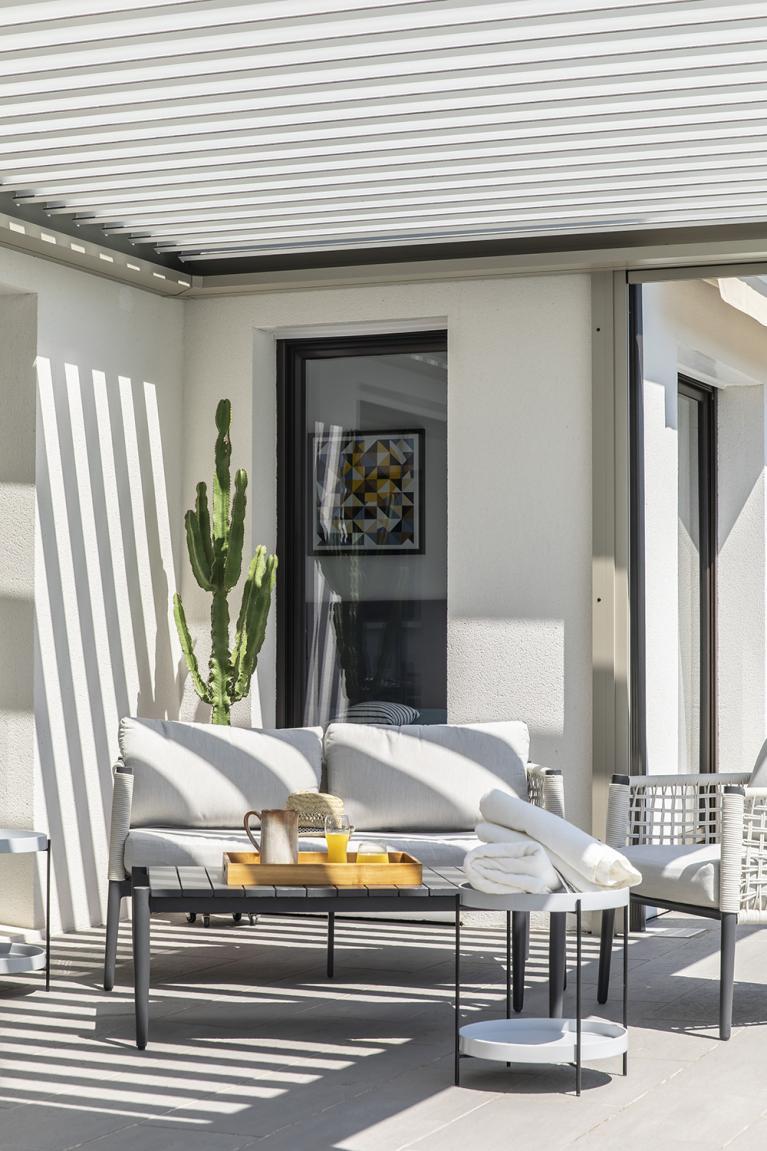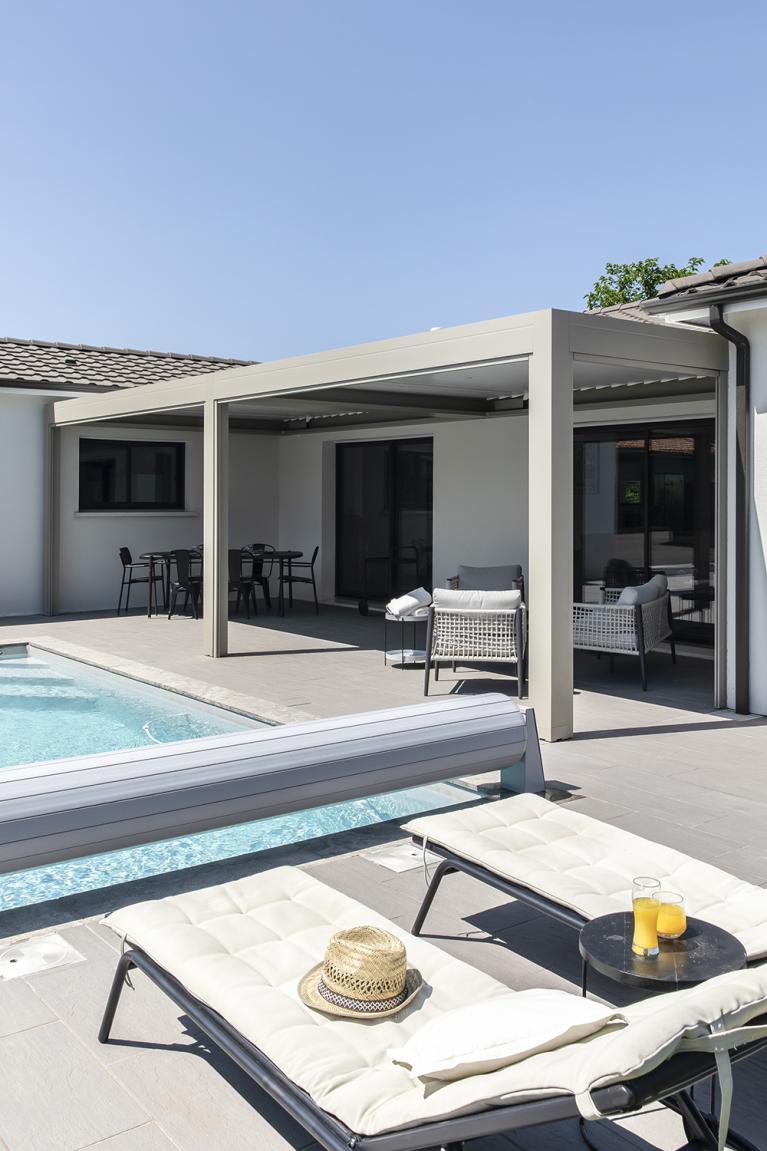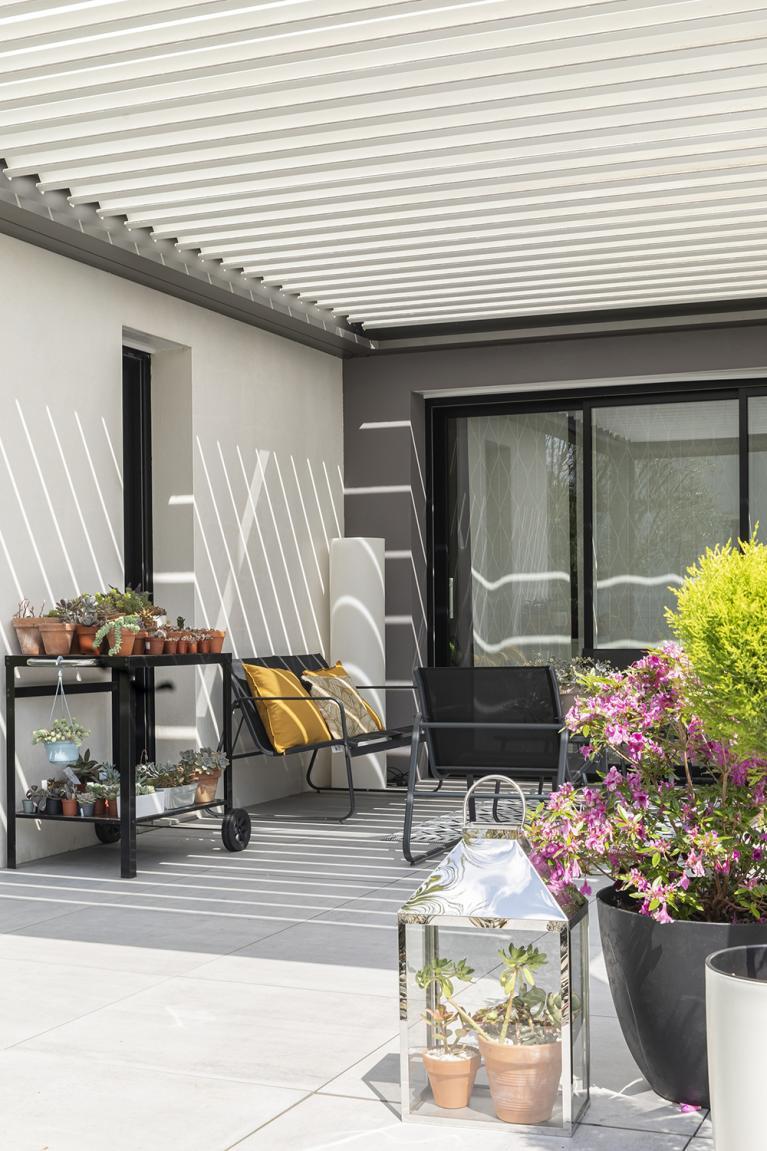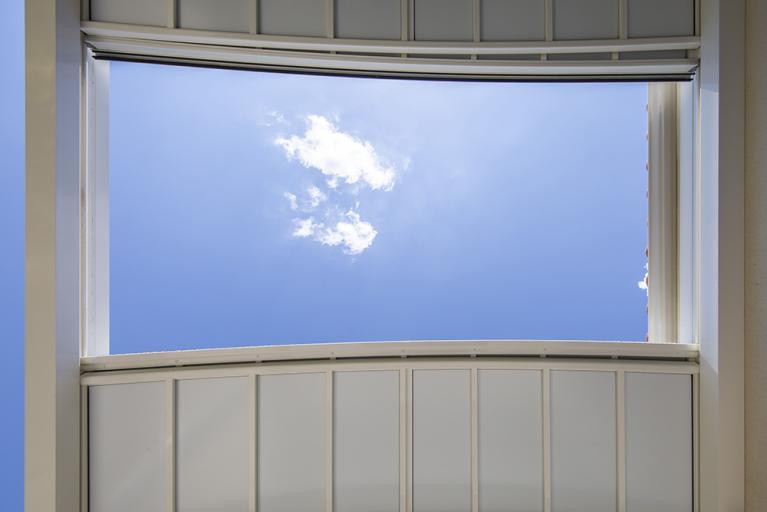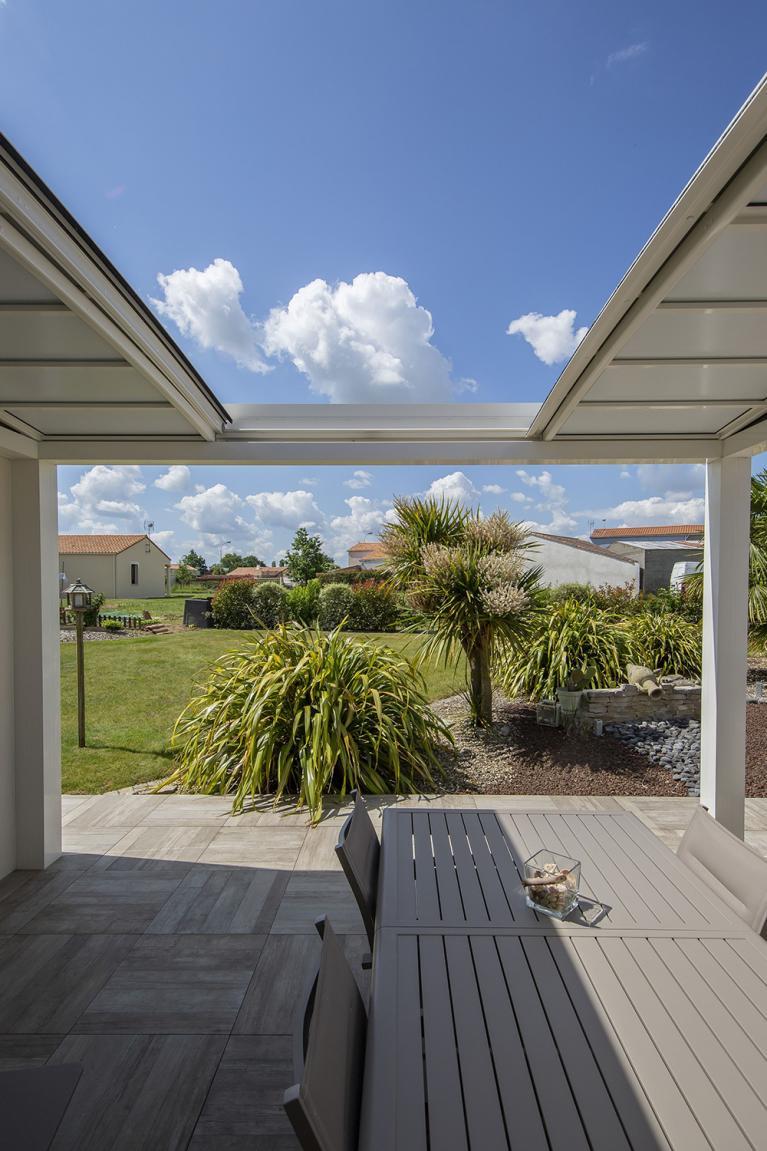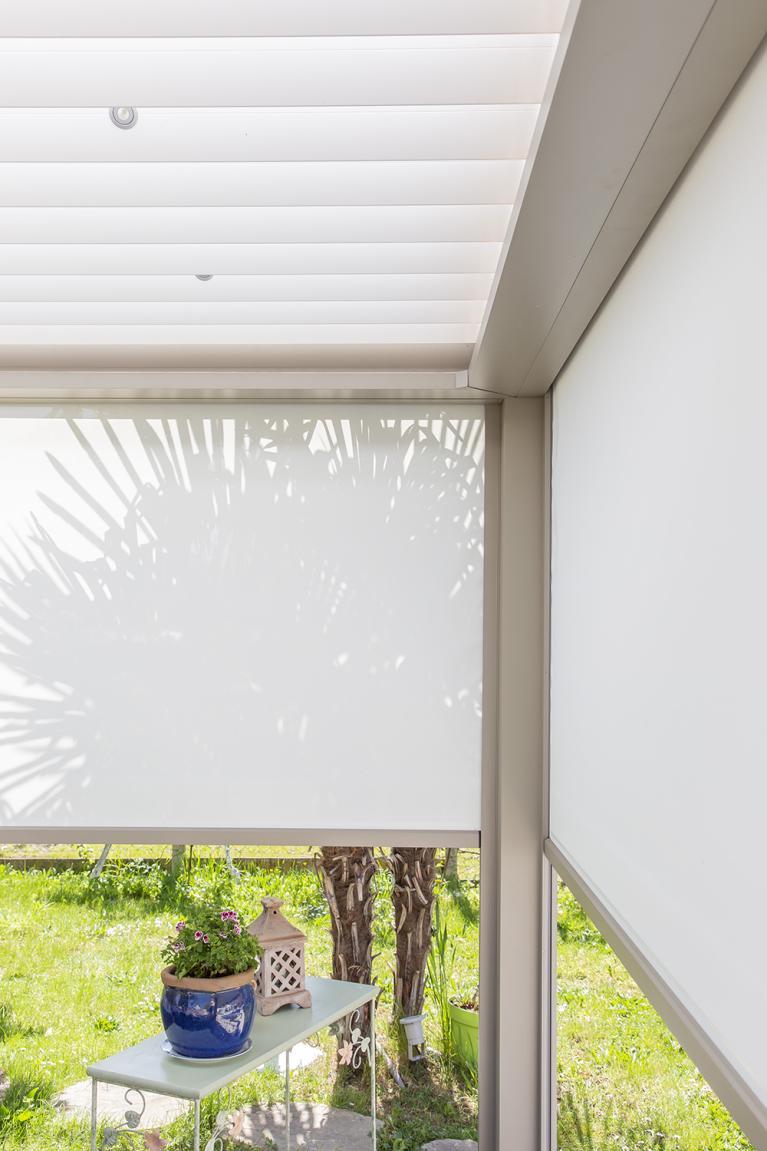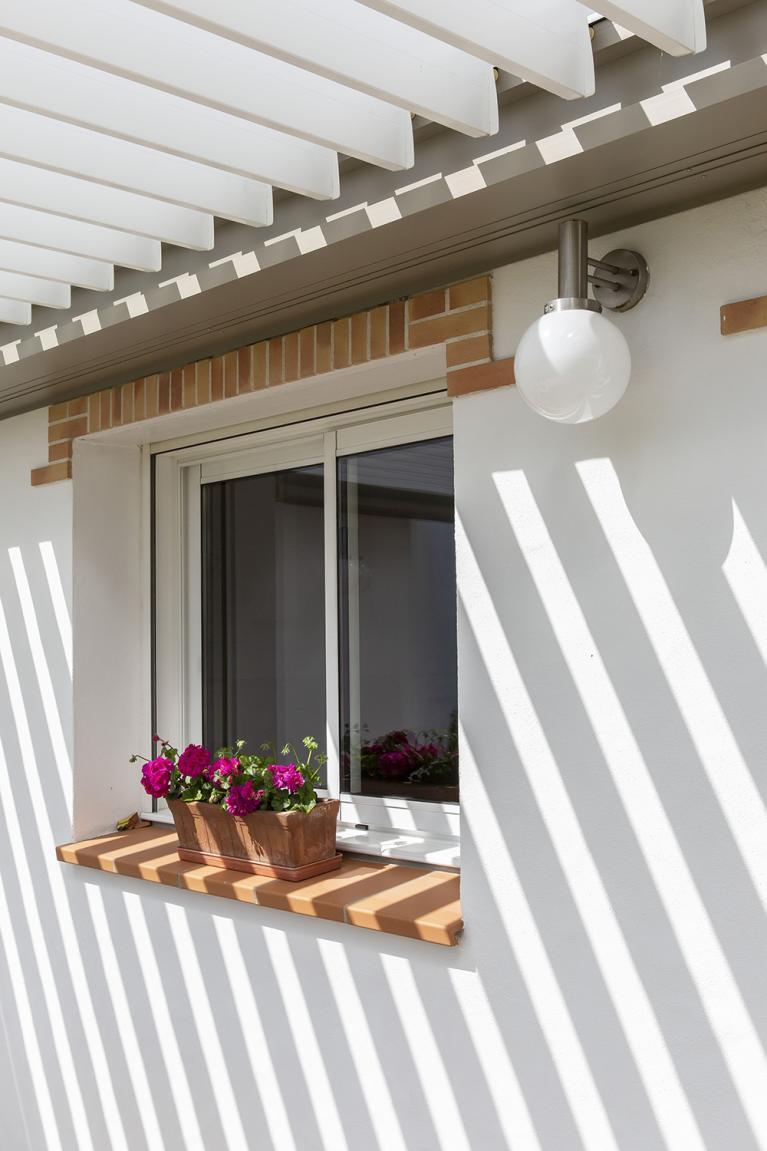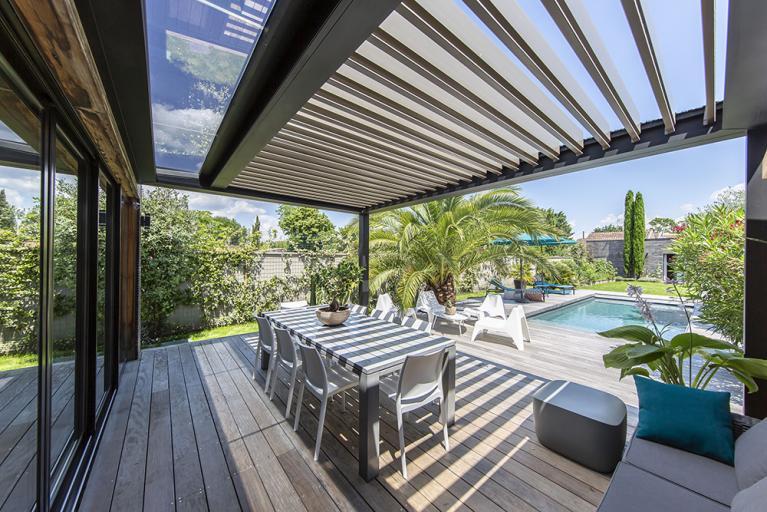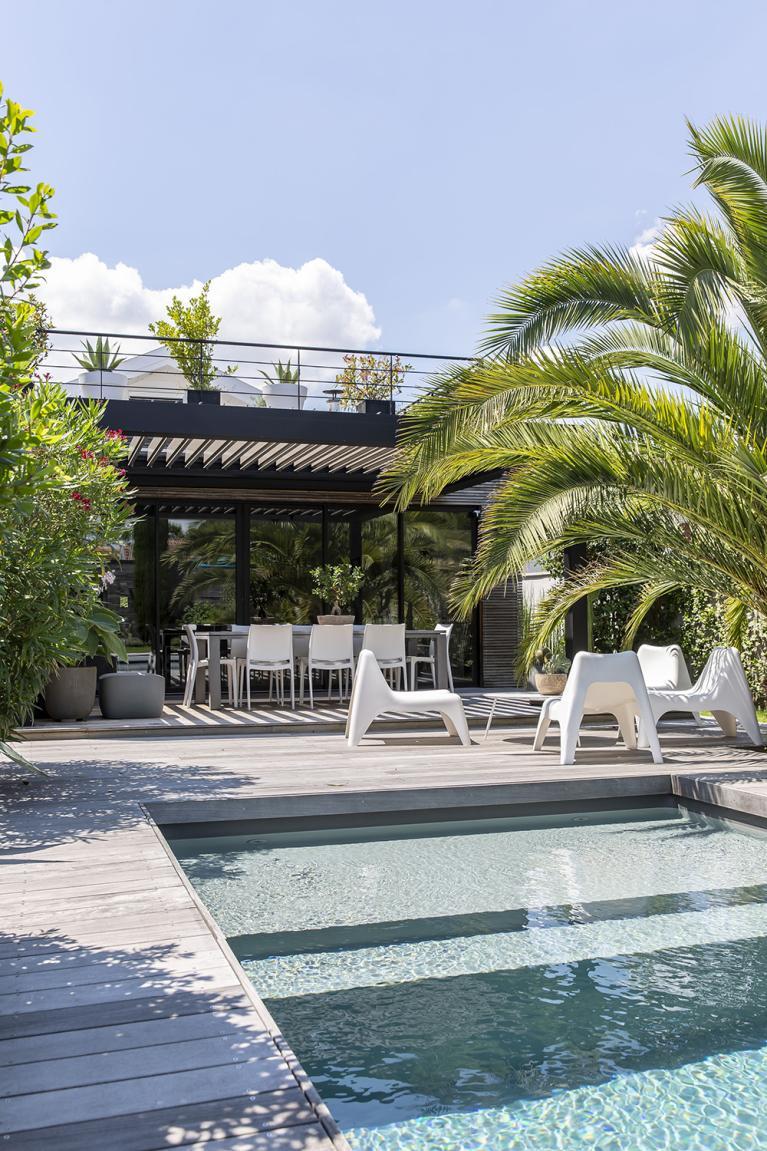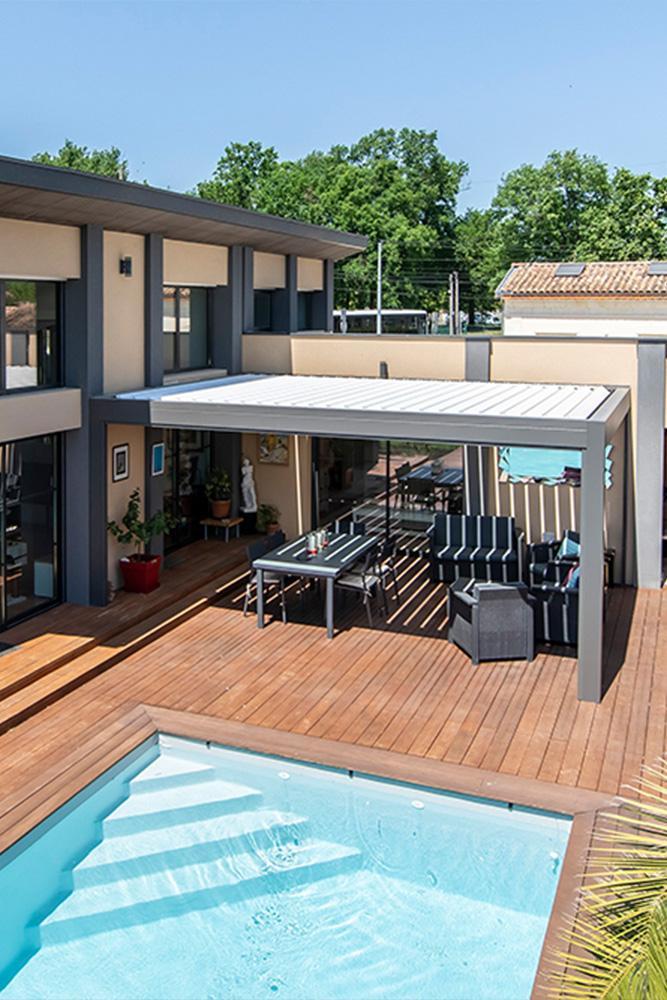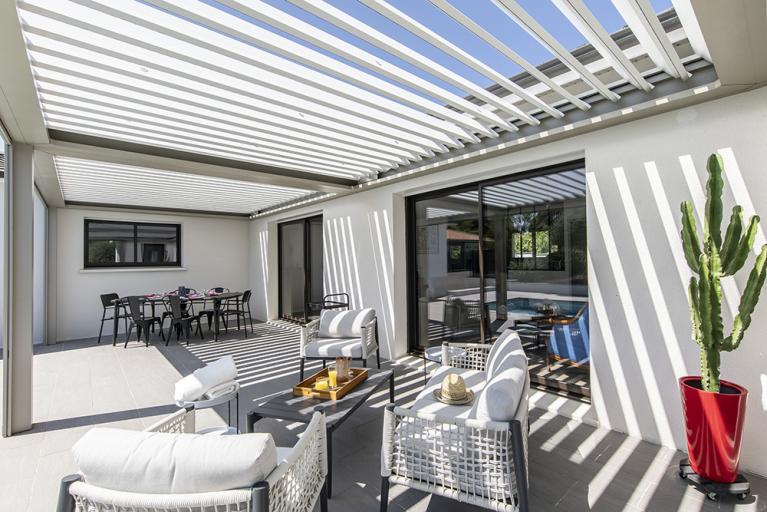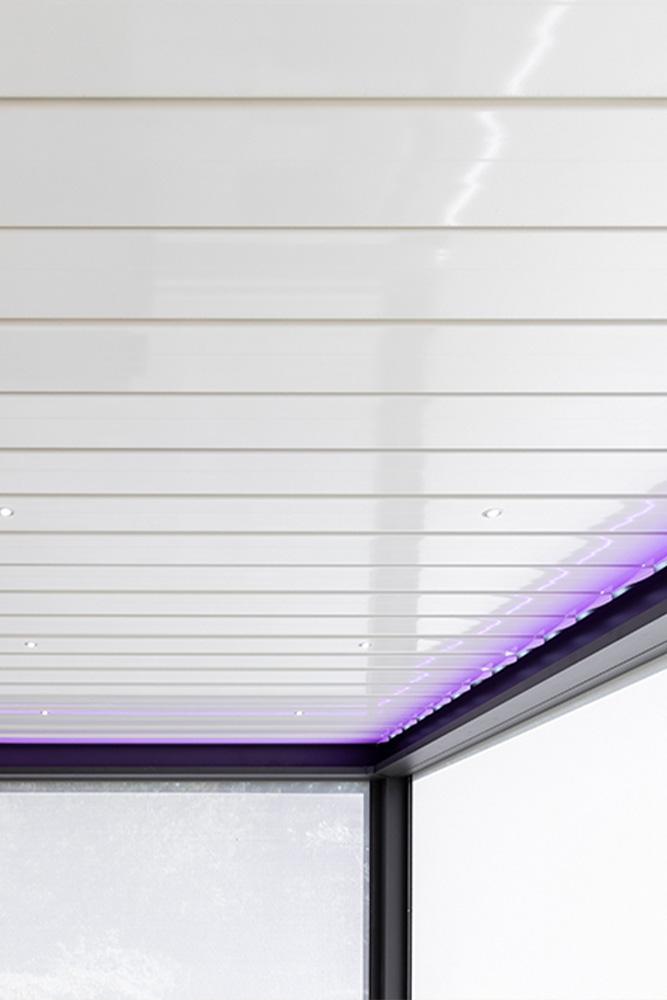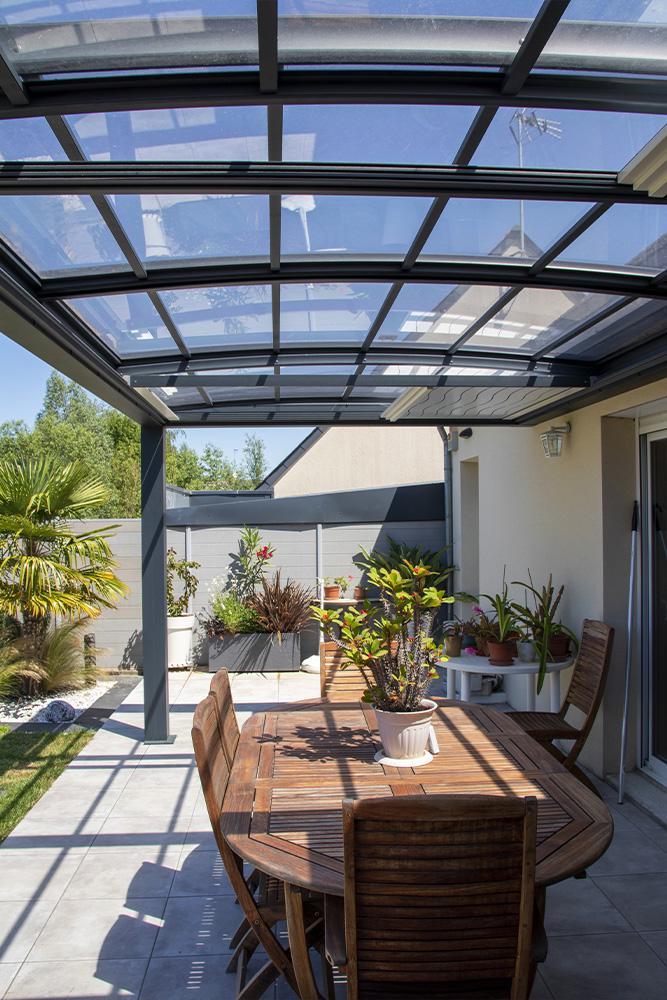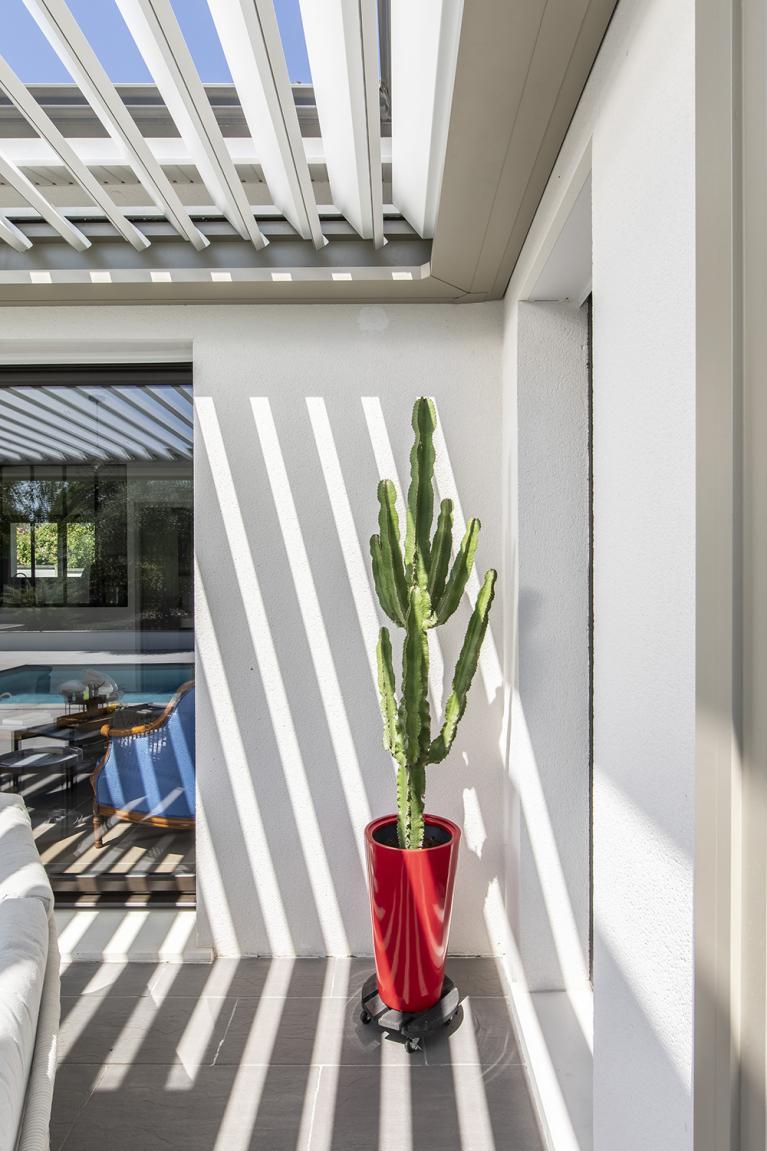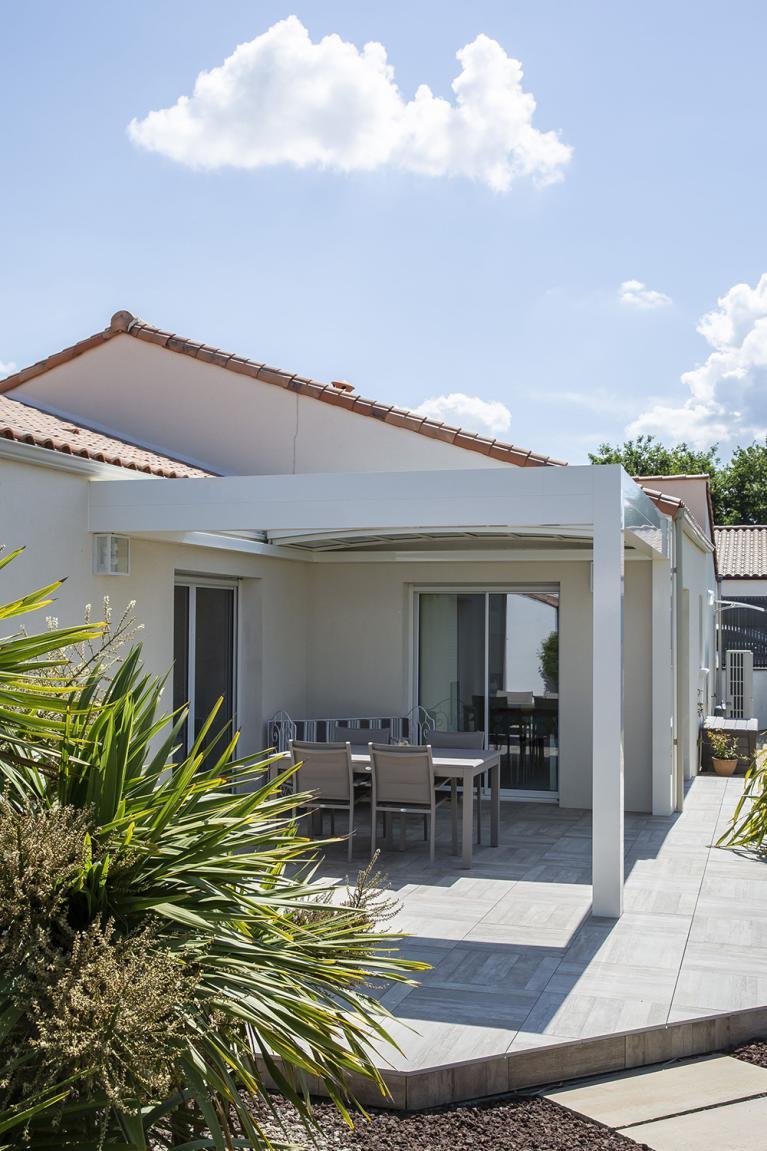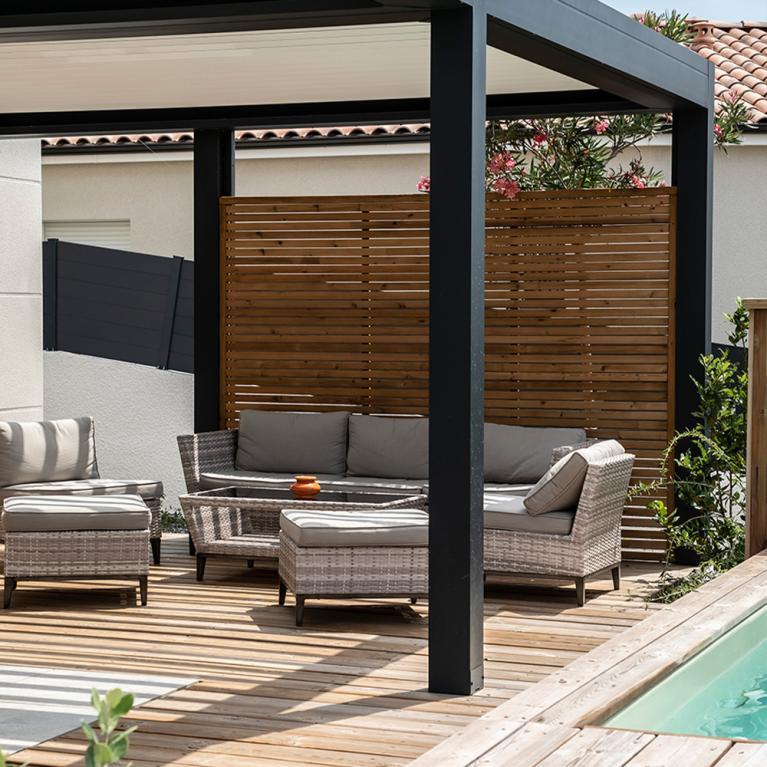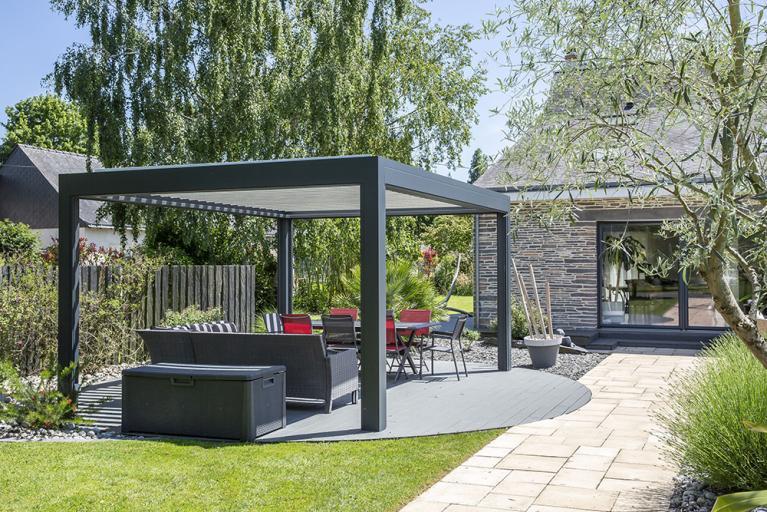How do you protect yourself from the sun on a terrace?
The terrace is often the dream space when buying or renting a property. But a south-facing terrace can quickly become almost unusable in summer. Solutions exist to create shade so you can make the most of it. Choose from parasols, awnings, shade sails and pergolas.
How do you shelter from the sun on a terrace?
How do you install a shade sail on a terrace?
The shade sail needs to be fixed to the wall. If necessary, you will also need to install one or more stakes to hold the sail in place on the low side.
Shade sails come in a variety of sizes, so you can install them on even the smallest terraces.
Although today's fabrics are increasingly resistant to sun and rain, without losing their colour, you should still fold the shade sail in strong winds. There are, however, fully automatic solutions that mean you don't have to roll up or unhook your sail. These are particularly suitable for windy regions.
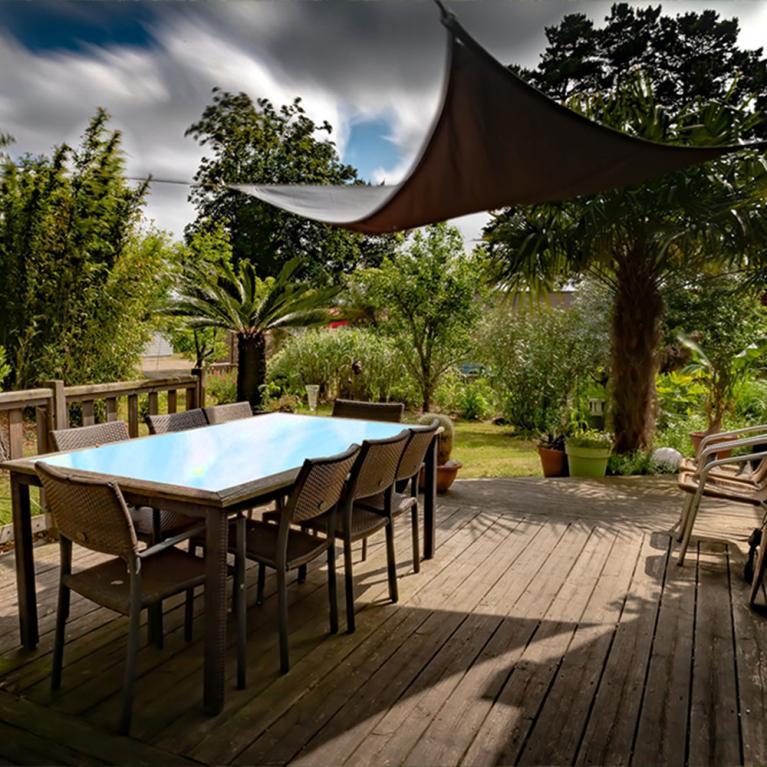
Which parasol should you choose for shade from the sun?
The most economical solution for creating shade is still the parasol. There's a choice of classic, straight parasols that can be placed in the centre of a table or over deckchairs, for example. They provide welcome shade and are easy to move to rotate with the sun or to create new areas of shade.
XXL parasols can completely cover a small terrace or, at the very least, garden furniture. This ensures that everyone is protected, at least during the hottest hours of the day.
Offset parasols, which are often large, avoid cluttering up the passageway. So you can easily shade a table, even if there's no space for a central stand.
There are also free-standing shade sails, which act as a bridge between the parasol and the traditional shade sail. In all cases, you'll need to remember to close the parasol in strong winds, and reorient it to follow the path of the sun around the house.
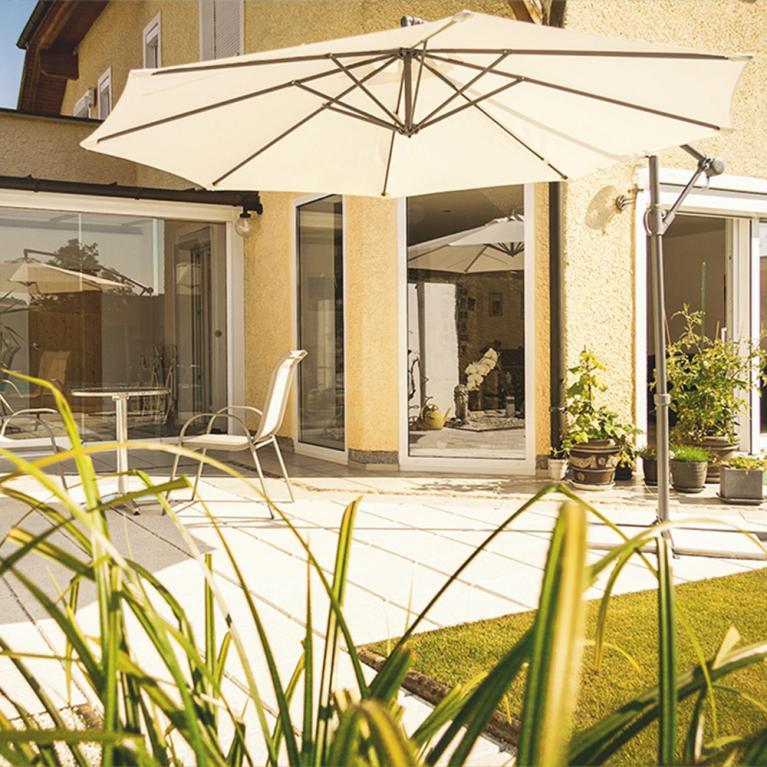
How do you choose the right awning?
If the terrace backs onto the house, a screen blind is also a solution for creating shade.
To choose the right size, you need to add about a metre in both length and width to the dimensions of the area to be protected, so that the shade cast really does cover your whole terrace.
Some awnings have sensors that automatically close them when it's very windy and unfold them when the sun is at its strongest, to automatically create shade, even inside the house.
You'll also need to choose the type of fabric:
- Polyester, the most economical, but also the most fragile,
- Waterproof acrylic,
- Microperforated, which lets water through.
Of all the solutions, the pergola is the most durable and the most resistant. With the addition of side panels, you can transform your terrace into a new room that you can enjoy for longer throughout the year.

How can I create shade under a pergola?
Bioclimatic or more traditional, the pergola has a roof to protect you from the sun's rays. The roof can be made from a range of different materials, with varying degrees of light transmission.
The bioclimatic versions adapt to the weather conditions and to your desire for sunlight, so they are suitable all year round.
You can also opt for a retractable canvas roof, which will let the air through but filter out UV rays, for greater comfort.
You can also opt for a decorative trellis, which will create shade like under the branches of a tree, for a poetic atmosphere depending on the play of light.
Finally, to avoid being bothered by the sun at the end of the day, you can add canvas side walls to your pergola. They'll form a real wall against the sun's rays.
Don't hesitate to contact us so that we can help you with your project.
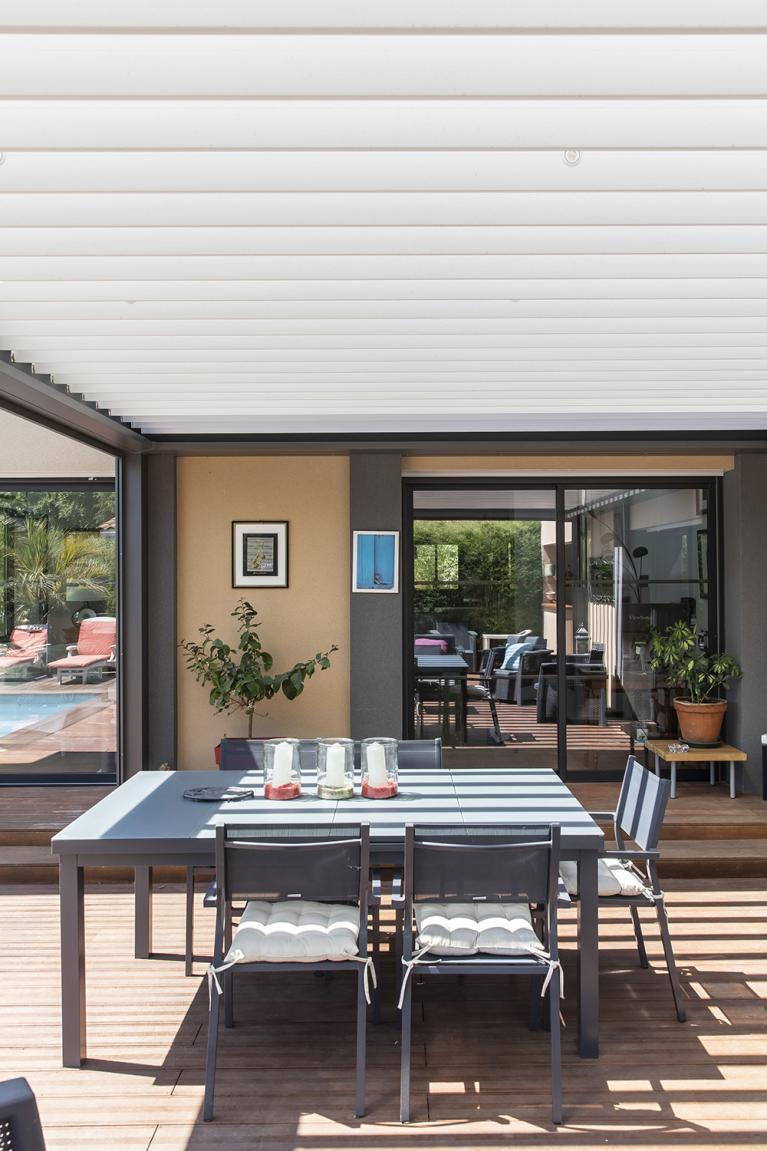
Discover the inspirations
Read all the articles in the magazine
You have a project?
Would you like a personalised 3D study and a free quotation? Contact us by clicking below.
AKENA is...
Over 40 years of experience
Founded in 1981 by one man, we now have more than 500 employees dedicated to making your project a success.
Made in France
A historic site and two factories covering more than 25,000 m² in Dompierre-sur-Yon in the Vendée region (85)
Innovative and tailor-made products
At AKENA, we are brimming with new ideas to improve and enhance our products.
The European leader in conservatories, pergolas...
But not only! AKENA also offers a complete range of carports and pool houses.
